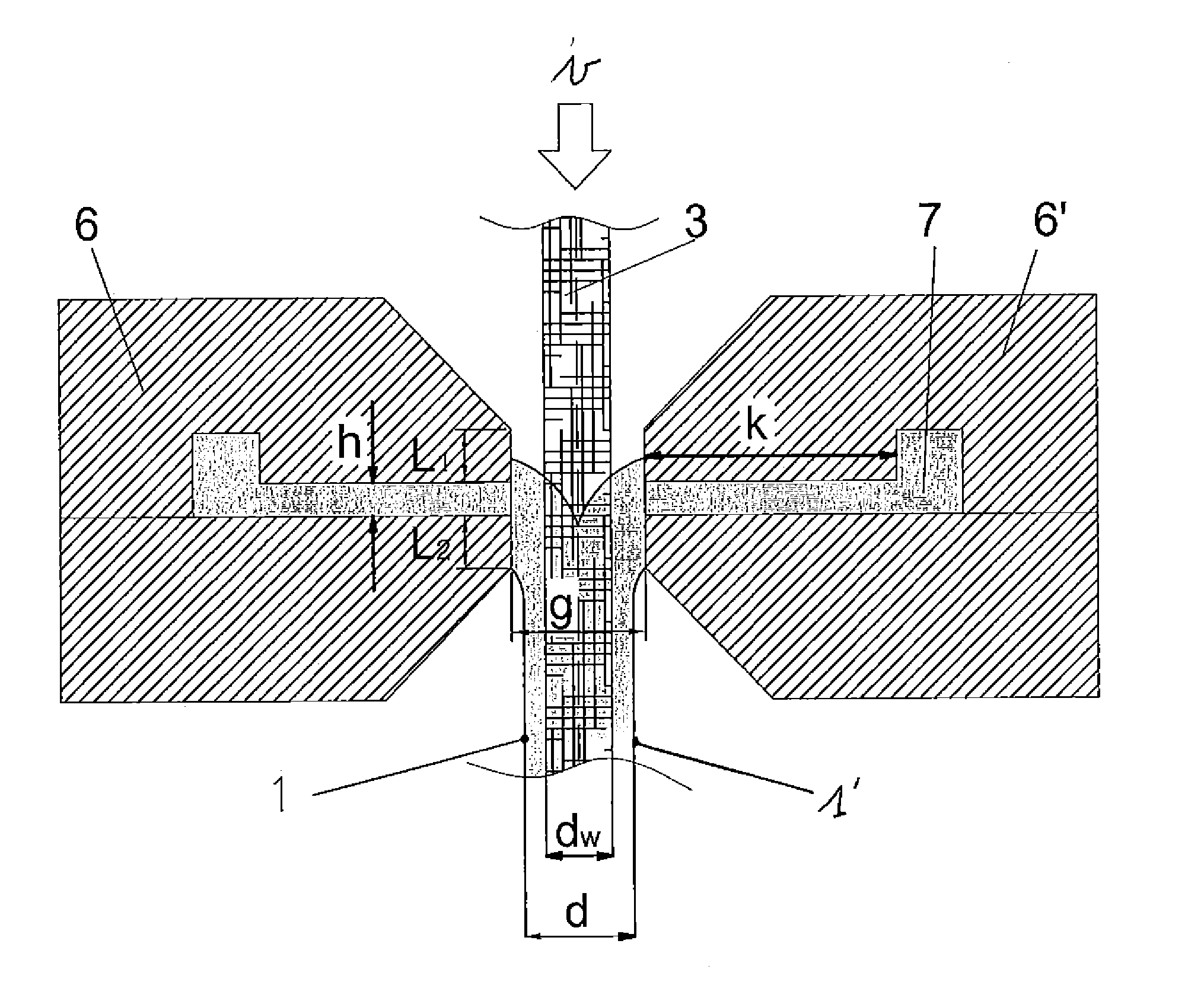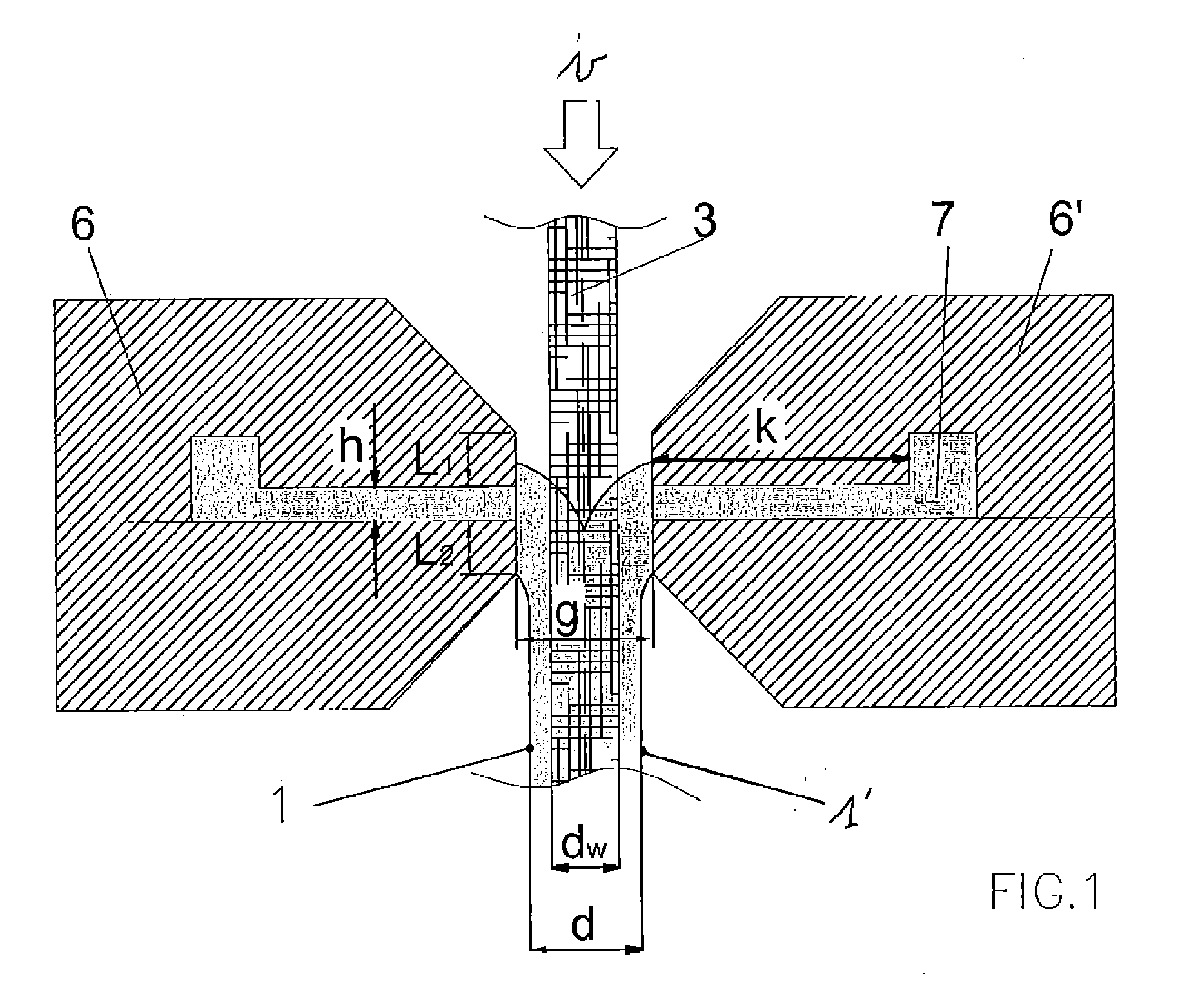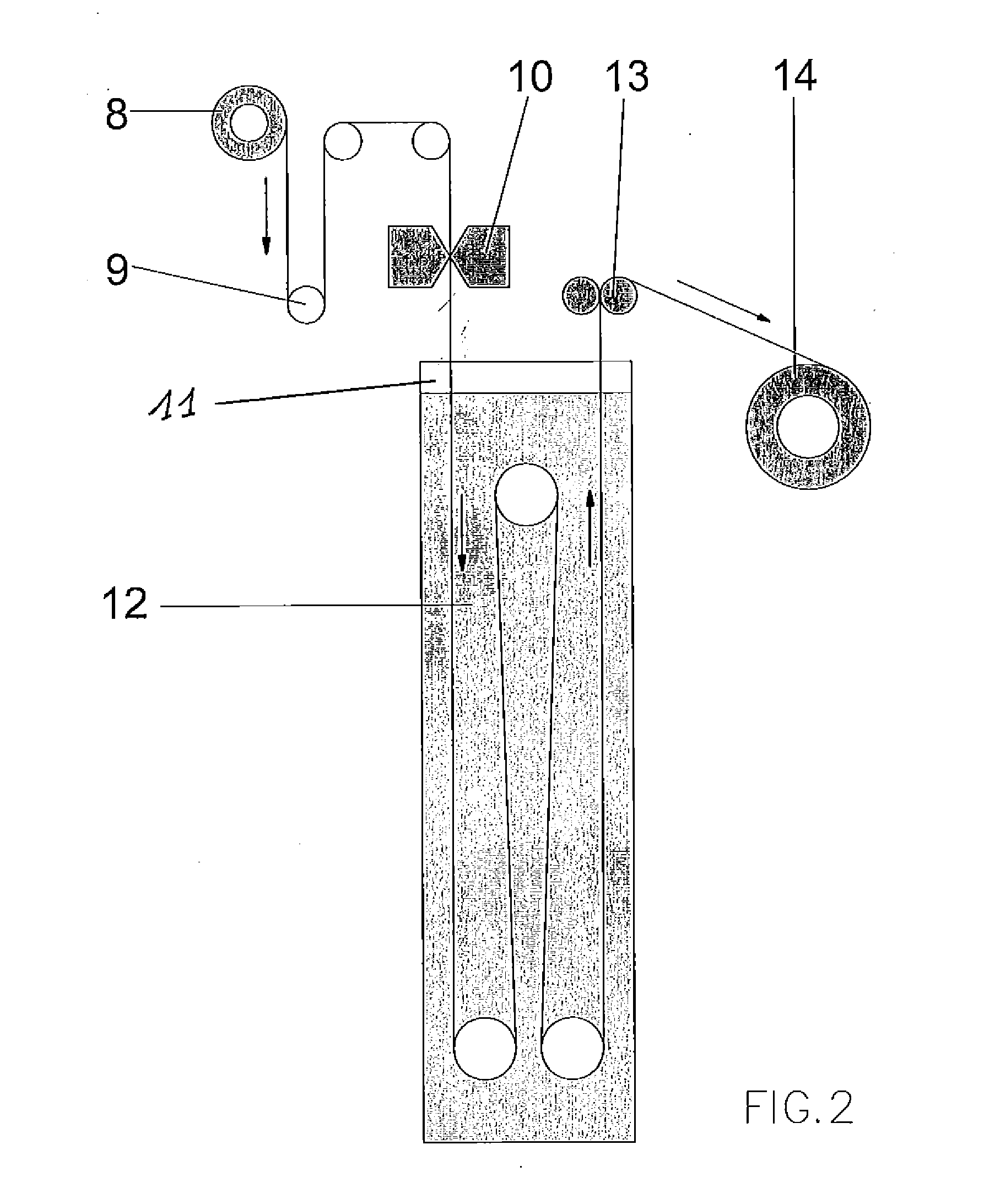Apparatus and process for producing an ion-permeable web-reinforced separator and separator obtainable therewith
- Summary
- Abstract
- Description
- Claims
- Application Information
AI Technical Summary
Benefits of technology
Problems solved by technology
Method used
Image
Examples
example 1
Model Experiments
[0106]Layers of each of dope 2 and dope 7 were separately coated on a non-porous support with wet-layer thicknesses of 100 μm, 500-600 μm and 700-800 μm using the apparatus schematically shown in FIG. 2. The coating speed i.e. the transport speed of the support was 1 m / min and each impregnation head provided 400 mL / m.min of dope at a temperature of 80° C. to each side of the support. Phase inversion was realized by inversion, coagulation and washing by immersion in a water bath at a temperature of 60° C. [5] to remove the solvents N-ethyl-pyrrolidone and glycerol followed by rinsing. Pore sizes in the range of 50 nm to 100 nm were thereby realized.
[0107]Finally the resulting porous layers were dried at 40° C. for 60 minutes, the crimp of the resulting unsupported porous layers was evaluated at temperatures of 60° C. and 100° C. in water over periods of 1 to 10 minutes with a control experiment over 110° C. to check whether the crimp in hot water after 10 minutes rep...
example 2
[0111]Different porous web-types with different thicknesses were impregnated using different dopes with different viscosity ratios.
[0112]The cockling (waviness) of the ion-permeable web-reinforced separator was evaluated on the product of the number of waves per 10 cm and the amplitude of the waves in mm and was awarded an assessment on a numerical scale of 0 to 5 as follows:
product of the number of wavesper 10 cm and the amplitude ofassessmentthe waves in mm [mm]0 =no macrocopically visible waves1 =above 0 but 2 =3 to 3 =6 to 4 =9 to 5 =>13
[0113]The cocking assessment numbers for separators 1 to 38 are given in Table 5 below.
TABLE 5porousvis-weboverallcocklingSep-cositythicknessthicknessthicknessassessmentaratorDoperatio[μm][μm]rationumber131.934507001.563231.893006202.073331.893006202.073431.963006202.072531.963006202.072631.9345010502.334731.9345010502.335831.932005002.505957.933505101.4601057.933505501.5701158.113505501.5701257.931503002.0001358.112004502.2551457.931506004.00515...
examples 3 to 10
[0114]The separators of EXAMPLES 3 to 10 were produced using the apparatus shown in FIG. 2 with different elongated porous webs as indicated in Table 6 with as phase inversion station a water bath at with the surface of the water not being immediately adjacent to the duplex impregnating apparatus with the transport speeds, dope types, dope temperatures, dope viscosity ratios, dope flow rates and water bath temperatures given in Table 6 below.
TABLE 6elongated porous webDopewaterthick-transportflowbathwidthlengthnessspeedviscositytemperatureratetemperatureExampletype[cm][m][μm][m / min]typeratio[° C.][mL / min][° C.]3PP45203502610.5525450250445 / 51PW4FC45503102611.2025550250360 / 50PW5FC49153101214.8945260250360 / 50PW6PP48.5503501215.5760220250445 / 51PW7PP48.5503501.5611.6960320250445 / 51PW8PP48.5253501.5612.9760320250445 / 51PW9PP48.5253501.5612.9760320250445 / 51PW10PP48.5501901612.7360245250140 / 38PW
The characteristics of the separators of EXAMPLES 3 to 10 are summarized in Table 7 below.
TABLE 7p...
PUM
| Property | Measurement | Unit |
|---|---|---|
| Length | aaaaa | aaaaa |
| Fraction | aaaaa | aaaaa |
| Angle | aaaaa | aaaaa |
Abstract
Description
Claims
Application Information
 Login to View More
Login to View More - R&D
- Intellectual Property
- Life Sciences
- Materials
- Tech Scout
- Unparalleled Data Quality
- Higher Quality Content
- 60% Fewer Hallucinations
Browse by: Latest US Patents, China's latest patents, Technical Efficacy Thesaurus, Application Domain, Technology Topic, Popular Technical Reports.
© 2025 PatSnap. All rights reserved.Legal|Privacy policy|Modern Slavery Act Transparency Statement|Sitemap|About US| Contact US: help@patsnap.com



